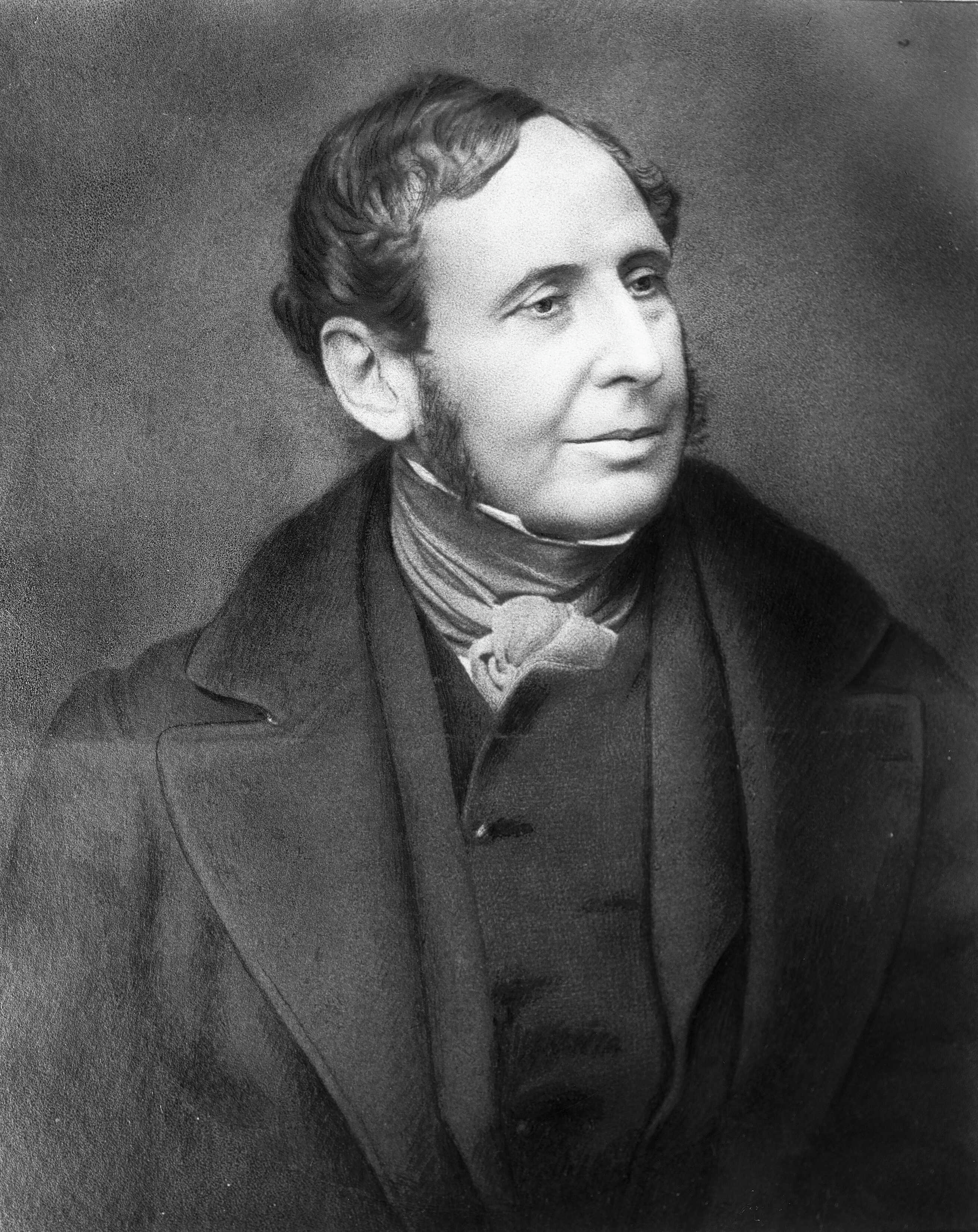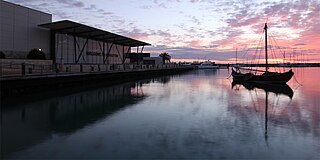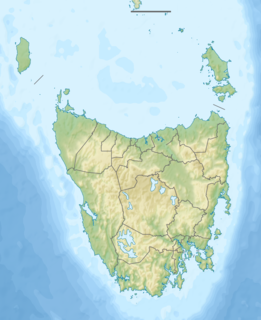Related Research Articles

HMS Beagle was a Cherokee-class 10-gun brig-sloop of the Royal Navy, one of more than 100 ships of this class. The vessel, constructed at a cost of £7,803, was launched on 11 May 1820 from the Woolwich Dockyard on the River Thames. Later reports say the ship took part in celebrations of the coronation of King George IV of the United Kingdom, passing through the old London Bridge, and was the first rigged man-of-war afloat upriver of the bridge. There was no immediate need for Beagle so she "lay in ordinary", moored afloat but without masts or rigging. She was then adapted as a survey barque and took part in three survey expeditions.

Vice-Admiral Robert FitzRoy was an English officer of the Royal Navy and a scientist. He achieved lasting fame as the captain of HMS Beagle during Charles Darwin's famous voyage, FitzRoy's second expedition to Tierra del Fuego and the Southern Cone.

Geraldton is a coastal city in the Mid West region of the Australian state of Western Australia, 424 kilometres (263 mi) north of the state capital, Perth.

Admiral Phillip Parker King, FRS, RN was an early explorer of the Australian and Patagonian coasts.

Admiral John Lort Stokes, RN was an officer in the Royal Navy who travelled on HMS Beagle for close to eighteen years.

John Clements Wickham was a Scottish explorer, naval officer, magistrate and administrator. He was first officer on HMS Beagle during its second survey mission, 1831–1836, under captain Robert FitzRoy. The young naturalist and geologist Charles Darwin was a supernumerary on the ship, and his journal was published as The Voyage of the Beagle. After that expedition, Wickham was promoted to Commander and made captain of the Beagle on its third voyage, from 1837 and conducted various maritime expeditions and hydrographic surveys along the Australian coastline.

The Easter Group is the central of three groups of islands that make up the Houtman Abrolhos island chain. Nominally located at 28°44′S113°46′E, it is about 20 kilometres by 12 kilometres, and consists of a number of islands including
The Abrolhos painted buttonquail is a subspecies of the painted buttonquail endemic to the Houtman Abrolhos. It is common on North Island, and also occurs on other islands of the Wallabi Group, namely East Wallabi, West Wallabi, Seagull and Pigeon Islands.

Discoveries in Australia; with an account of the coasts and rivers explored and surveyed during the voyage of H.M.S. Beagle, in the years 1837-38-39-40-41-42-43, by command of the Lords Commissioners of the Admiralty. Also a narrative of Captain Owen Stanley's visits to the islands in the Arafura Sea., widely known as Discoveries in Australia, is an 1846 two-volume work by John Lort Stokes. It comprises the edited journals of the explorations and surveys, both maritime and inland, of Stokes and other members of the crew of HMS Beagle, during a surveying expedition in Australia that lasted from 1837 to 1843. The work is of immense historical significance, as a great many places in Australia were discovered during the expedition, and the names and locations of these places were published for the first time in Discoveries in Australia.

Turtle Dove Shoal is a dangerous shoal about three kilometres wide, located at 29°25′S114°12′E, in the Indian Ocean about fifty kilometres south of the Houtman Abrolhos, off the coast of Western Australia.
In fact the Batavia was wrecked in the Wallabi Group, 60 kilometres (40 mi) to the north. The wreckage seen by the Beagle was either that of the Zeewyk, or the unidentified wreck seen by the Zeewyks crew. The name Batavia Road is thus a misnomer, as are a number of other places named by Stokes, including Pelsaert Island, the Pelsaert Group, and Wreck Point. Stokes' erroneous view was accepted without question for over fifty years, and it has been claimed that the confusion caused the discovery of the Batavia shipwreck to be set back by over a century.

The Cherokee class was a class of brig-sloops of the Royal Navy, mounting ten guns. Brig-sloops were sloops-of-war with two masts rather than the three masts of ship sloops. Orders for 115 vessels were placed, including five which were cancelled and six for which the orders were replaced by ones for equivalent steam-powered paddle vessels.

The Beagle Island, part of the Badger Group within the Furneaux Group, is a 1.2-hectare (3.0-acre) unpopulated low, flat granite island, located in Bass Strait, lying west of the Flinders and Cape Barren islands, Tasmania, south of Victoria, in south-eastern Australia. The island is contained within a nature reserve and is part of the Chalky, Big Green and Badger Island Groups Important Bird Area.

Vansittart Island, also known as Gun Carriage Island, is a granite island with an area of 800 hectares. The island is part of Tasmania's Vansittart Island Group, lying in eastern Bass Strait between Flinders and Cape Barren Islands in the Furneaux Group.
Flag Hill is the highest hill on East Wallabi Island, and the highest point in the Houtman Abrolhos, an archipelago off the coast of Western Australia. It is located in the north-east of the island; its gazetted location is 28°26′7″S113°44′14″E, but in fact it is located somewhat east of there at about 28°26′02″S113°44′18″E. It is about 15 metres (50 ft) high.

Broughton Island is an island 14 km north-east of Port Stephens, New South Wales, Australia. It is part of the Myall Lakes National Park.(map)
Champion Bay is a coastal feature north of Geraldton, Western Australia, facing the port and city between Point Moore and Bluff Point.

Completed in 1849, the original 20-metre (66 ft) Wadjemup Lighthouse was Western Australia's first stone lighthouse and was built to provide a safer sailing passage for ships to Fremantle Port and the Swan River Colony.
Pringle Stokes was a British naval officer who served in HMS Owen Glendower on a voyage around Cape Horn to the Pacific coast of South America, and on the West African coast fighting the slave trade. He then commanded HMS Beagle on its first voyage of exploration in the south Atlantic. After two years in command of the Beagle, depressed by the harsh winter conditions of the Strait of Magellan, he committed suicide.
References
- ↑ Dedman, Roy (December 1995). "H. M. Colonial Schooner CHAMPION" (PDF). Maritime Heritage Association Journal. Fremantle, WA: Maritime Heritage Association, Inc. 6 (4): 9–13.
- ↑ Stokes, John Lort (1846). "Chapter 5: Victoria River to Swan River". Discoveries in Australia, with an account of the coasts and rivers explored and surveyed during the voyage of the Beagle, 1837–1843, Volume 2. London: T and W. Boone. Retrieved 6 November 2014.
- ↑ "Expedition to the Northwest". The Perth Gazette and Western Australian Journal . 8 February 1840. p. 23. Retrieved 6 November 2014.
- ↑ Kimberly, Warren Bert (1897). "13. Land Laws; Exploration; Australiand Settlement 1839-1842". History of West Australia. Melbourne: F. W. Niven & Co. Retrieved 22 April 2014.